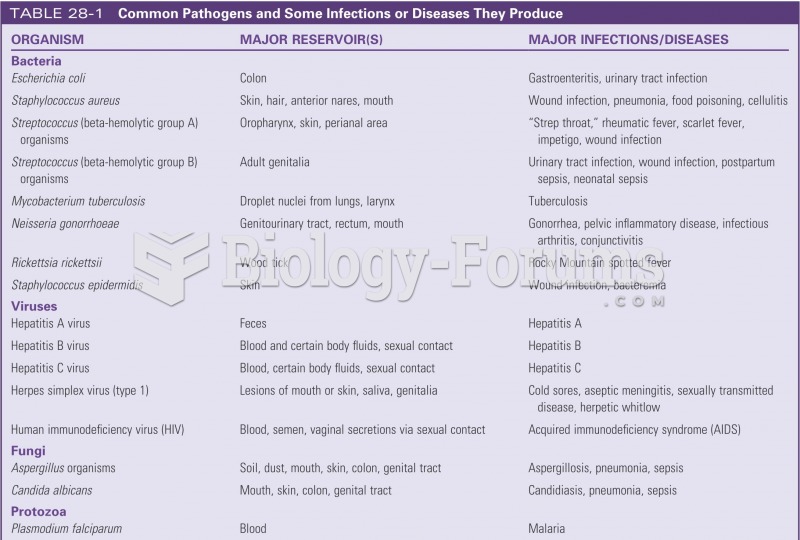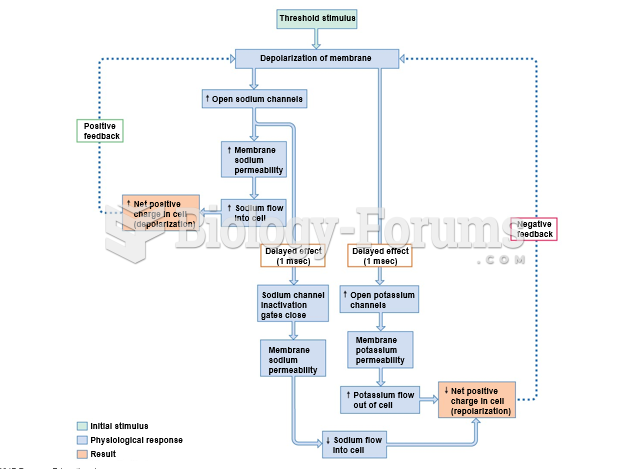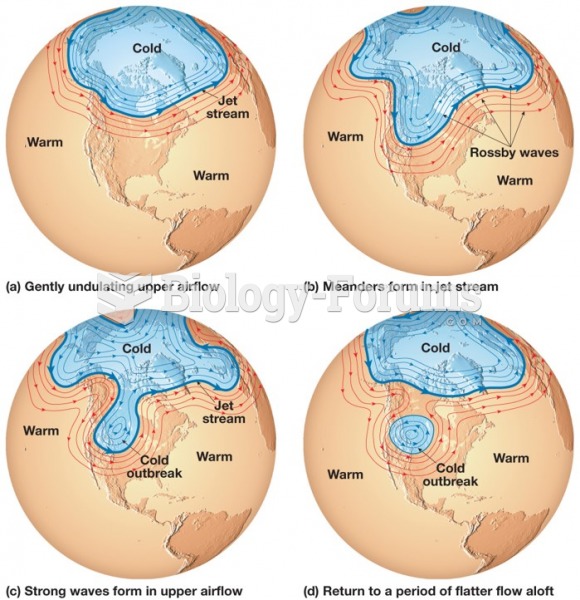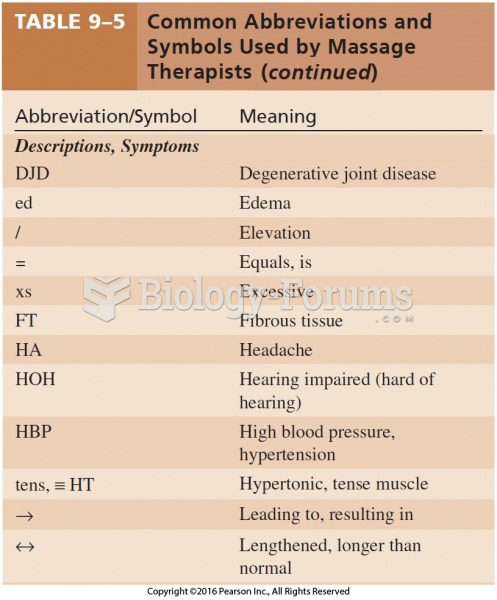|
|
|
Earwax has antimicrobial properties that reduce the viability of bacteria and fungus in the human ear.
When Gabriel Fahrenheit invented the first mercury thermometer, he called "zero degrees" the lowest temperature he was able to attain with a mixture of ice and salt. For the upper point of his scale, he used 96°, which he measured as normal human body temperature (we know it to be 98.6° today because of more accurate thermometers).
Most childhood vaccines are 90–99% effective in preventing disease. Side effects are rarely serious.
Approximately 15–25% of recognized pregnancies end in miscarriage. However, many miscarriages often occur before a woman even knows she is pregnant.
By definition, when a medication is administered intravenously, its bioavailability is 100%.







